MOJ
eISSN: 2573-2919


Research Article Volume 3 Issue 1
1Department of Urban and Regional Planning, The Federal University of Technology, Nigeria
2Department of Remote Sensing and GIS, The Federal University of Technology, Nigeria
Correspondence: JO Owoeye, Department of Urban and Regional Planning, School of Environmental Technology, The Federal University of Technology, Akure; P.M.B 704 Akure, Nigeria, Tel 234-803-359-656-6
Received: December 08, 2017 | Published: January 22, 2018
Citation: Owoeye JO, Akinluyi FO. Geospatial analysis of land cover change and urban sprawl trend in Akure Region, Nigeria. MOJ Eco Environ Sci. 2018;3(1):26-31. DOI: 10.15406/mojes.2018.03.00062
This study investigates the trend of urban sprawl and land cover change in Akure region between 1985 and 2014 using RS and GIS techniques with the view of examining the direction of the continuous expansion of the city. Using aerial imagery overlay (AIO), the pattern of land use changes in the study area was determined. Imageries obtained for the study were processed and classified, then overlaid to determine the pattern of changes in land use, direction and extent of expansion during the study period. Findings revealed that the city grows sporadically which had unprecedented effects on the pattern of land uses within the city and in the adjoining settlements. There were incompatible conversions in land uses and undue encroachment into green areas in the adjoining communities. In view of this, the study suggests effective zoning strategy to check the indiscriminate nature of urban expansion whose effects on land use are well prominent in the study area. Adequate monitoring by the Development Control Department and other stakeholders in urban planning is equally suggested to mitigate the incompatible land use change in the area.
Keywords: geo-spatial, urban sprawl, land cover, akure region, AIO
Urban sprawl was conceptualized by Glaeser and Kahn1 as unplanned expansion of urban areas which is characterized by low density physical development and non-existence of basic municipal infrastructure usually beyond urban fringes. Some early urban development researchers like Alonso,2 Mill3 and Muth4 attributed the emergence of sprawl to ‘mono-centric city model’, which suggests spatial structure of urban areas resulted from the tradeoff between the rent of land and cost of commuting. The low cost-center coupled with relatively low rent at the peripheries of cities in many developing countries facilitates the growth of peri-urban areas. Land use and land cover (LULC) change, on the other hand, is urbanization induced which has led to dramatic changes in land use practices.5 Rapid pace of urbanization is believed to be a global problem present in most of the developing countries of the world. Balogun et al.,6 opined that urban populations in developing countries have grown by 40% between 1900 and 1975. According to them, the trend will continue adding approximately 2 billion people to the urban population of the presently less-developed nations for the next 30 years. In similar way, Arnfield7 observed that the world is becoming increasingly urbanized with 45% of the population already living in the urban areas in the year 2000. With the projection as at then, half of the world will live in urban areas by 2007. It was also estimated that by the year 2025, 60% of the world’s population will live in cities (UNPF, 1999). Akure is not in any way going contrary to this prediction as the population has been more than triple of what it used to be before it became administrative headquarters of the state and local governments. Generally, land cover is often altered principally by direct human use like agriculture and livestock raising, forest harvesting and management, urban and sub-urban construction and development. Hardly can we find any vegetation that has not been affected or altered by man in the world.8-13 In this regard, about 400,000 hectares of vegetation cover are confirmed to be lost annually.14,6. Due to anthropogenic activities, the earth surface is being significantly altered by man’s presence and several activities on earth. According to Fasal15 land transformation has been asserted to be one of the most important fields of human induced environmental transformation. Environmental protection is facing critical challenges due to several factors like increasing population, depletion of natural resources, environmental pollution, unplanned land use and several others. The aim of this paper, therefore, is to examine changes that have taken place in Akure urban land cover in the past three decades with a view of generating a predictive model for managing the future trend and combating its possible effects.
Review of related literature
Several researches have shown that unplanned changes of land use and land cover due to urban expansions have become a major problem.16,6,17 Most land cover changes occur without a clear and logical planning and without giving attention to their environmental impacts. Major flooding, air pollution in large cities as well as deforestation, urban growth, soil erosion, and desertification, are all consequences of a mismanaged planning and inappropriate projects’ execution without considering their environmental impacts. As observed in Nicholson (1987), the rapid land use land cover changes by the growing population have reduced natural vegetation cover in most countries of the world. Remote Sensing (RS) and Geographic Information System (GIS) technologies are veritable tools for observing urban growth and its management. The duo provides historical vehicle to monitor, determine and evaluate long term changes in land use due to urbanization process. They have been proved to be effective means for extracting and processing varied resolutions of spatial information for monitoring urban growth. According to Masser (2001), the collection of remotely sensed data facilitates the synoptic analyses of earth in terms of system functioning, burbling, and changes at local, regional and global scales overtime. Such data provides import data link between intensive, localized, ecological research and regional, national and international conservation and management of biological diversity.18 Land cover changes arising from urbanization, housing development, agriculture, and deforestation are some of the contributing factors to conversion of land cover to urban sprawl in Akure. These changes reflect on the population growth, land consumption rate and local climate. Expansion of Akure has resulted not only in depletion of natural resources, but also in deterioration of the environment due to incompatible changes in land use pattern.19 Agriculturally productive land and forestland are being converted to residential and other private and public uses. Balogun et al.,6 that the land use land cover pattern of a region is an outcome of natural and socio-economic factors and their utilization by man in time and space. Hence, the uncontrolled growth of urban development of Akure has adversely affected its ecosystem which may indirectly reflect on weather parameters with eventual local climate modification.20,6 Akure city functions as the capital of Ondo State and the administrative headquarters of Akure South Local Government Area. Between 1976 when it was created and present time, the city has experienced enormous growth and has developed independently of any spatial urban planning. Its rapid growth became prominently noticed in the last two to three decades.9,6 As urbanized features extended farther from the central areas, lands populated by development are altered in significant ways. From the population figures of past national censuses, the population of Akure increased appreciably from approximately 71,106 in 1963 to 239,124 in 1991 which further increased to 360,268 in 2006.21 Since 1976 when the town became the state capital, there have been remarkable changes in its growth and development. Several developmental projects that brought transformation to the physical landscape of the city are very prominent. For example, Oyinloye12,13 and Owoeye17 observed that the construction of Ilesha-Owo expressway opened up the area for further development as it links the city with the northern and eastern parts of the country. Consequently, more developments and establishment of public facilities fascinated to the area are concentrated along this route. To mitigate the negative effects of growth and expansion of the city, there is need to put in place adequate programs and policies that can foster its sustainable development. The essence is to encourage and monitor development in a way that it will not damage the environment for the incoming generations. This can only be achieved by taking appropriate inventory of the available resources and adequately plan for their present and future uses. It is on this premise that this study is set to investigate the influence of urban sprawl on land cover changes in Akure and its surrounding communities.
The research locale
The study centers on Akure city and its immediate environments. Akure is a notable city in the South-western Nigeria which became the capital of Ondo State on February 3rd, 1976. It is located between Latitudes 70151 and 70171 North of the Equator and between Longitudes 50141 and 50151 East of the Greenwich Meridian. It is about 204 km east of Ibadan, capital of Oyo state; 168 km west of Benin City, capital of Edo state; 311 km north-east of Lagos; and 323 km south-west of Abuja, the Federal Capital Territory of Nigeria. Akure town spreads over an area of about 15,500 km2 in about 370m above the sea level. Its population figure by the National Population Census (NPC, 1963) was just 71,106. With the influx of public servants into the town consequent upon state creation in 1976, the population rose to 239,124 and 360,268 in 1991 and 2006 respectively (NPC, 1991 and 2006) with a projection of 476,159 to year 2014 when this study was carried out, using the 3.18 annual growth rate (Figures 1–3).
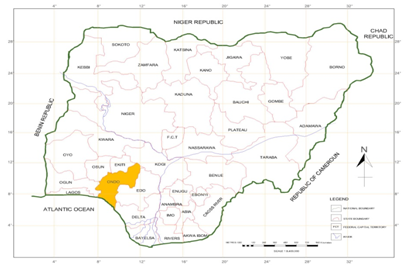
Figure 1 ONDO State in the National Setting.
Source: Dept. of Surveys, Federal Ministry of Works, Abuja (2014).
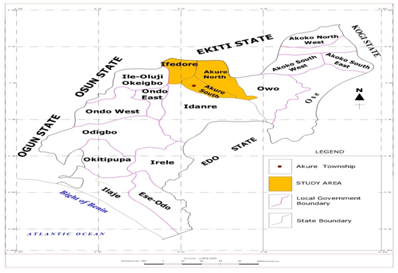
Figure 2 Ondo State and its Eighteen Local Govt. Areas.
Source: Ondo State Ministry of Lands and Housing, Akure (2014).
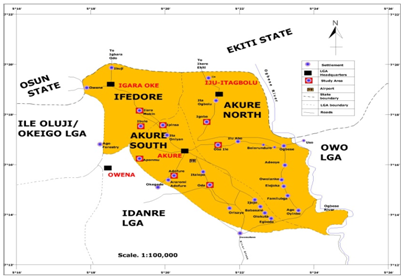
Figure 3 Locational Map of the Study Area in Regional Setting.
Source: Ondo State Ministry of Lands and Survey, Akure (2014).
The database
Data collection for this study was essentially through Aerial Imagery Overlay (AIO) with the aid of RS and GIS techniques. Personal observations were also made on the level and direction of the expansion. Other sources of data collection include government ministries and establishments for historical milieu of the area as well as base maps and population data used for the study. The study area has a total projected population of 476,159 in 2014 with a total land expanse of 125,212 hectares. The main approach used in this study was mainly post-classification comparison analysis of satellite imageries of Akure obtained at different decadal variations. This helps to show the direction and extent of growth in the study area from one period to the other. The studying period span through three decades and is divided as follows: 1985–1994, 1995–2004 and 2005–2014. The land cover for the study area is classified into four categories, which include: the built-up area (involving residential, commercial, industrial, recreational and educational land uses); thick vegetation (forested land areas); light vegetation (cultivated land areas), and the water bodies (rivers, streams, rivulets, etc).22
Analysis of land cover classifications and urban sprawl between 1985 and 2014
As shown in Figures 4a and 4b; larger proportion (80,796 hectares) of the study area were covered with thick vegetation in 1986 which accounted for 64.53% of the land area while 37,977 hectares (30.33%) were cultivated and covered with light vegetation. Only 5.1% were developed areas which are either residential, commercial, recreational, industrial or educational land uses, occupying just about 6384 hectares land area. Fifty-six (56) hectares (0.04%) were covered by water. This situation expresses the low level of development as at 1986 with a small compact urban area (Figure 4). In 2002, the percentage of built-up area had increased to 16.63% (20,885 hectares), cultivated area (light vegetation) also increased to 68,940 hectares (55.06%) while the area covered by thick vegetation reduced drastically to 32,978 Hectares (26.34%). This shows that much of the thick vegetation were cultivated while some gave way to further development and urban expansion through building constructions and provision of public utilities. This is illustrated in Figures 5a and 5b. The built-up area has further increased to about 22,985 hectares (18.36%) in 2007, light vegetation cover occupied 82,415 hectare (65.82%) while areas covered by thick vegetation and water body reduced to 19,002 hectares (15.18%) and 811 hectares (0.64%) respectively (see Figures 6a and 6b). The land use for the built-up area continues to increase till date while that of thick vegetation, light vegetation and area cover by water reduces. In 2014 (as presented in Figures 7a and 7b), land use for built-up area increased from 22,985 (in 2007) to 34,303 hectares (27.40%) while light vegetation (the cultivated area) reduced from 82,415 hectares (in 2007) to 72,675 hectares in 2014. The reason for this might be because of drastic reduction in number of farmers since majority of people working on the farms had been taken over by civilization while some land areas meant for cultivation were acquired for provision of public utilities (Figure 7).
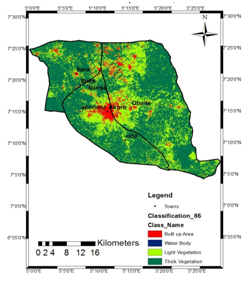
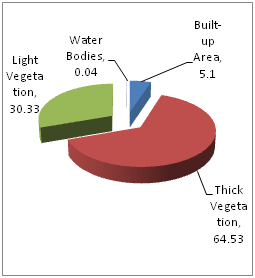
Figure 4a Land cover Classification of Akure as at 1986. b: % Land cover Classification of Akure for year 1986.
Source: Landsat 4 Thematic Mapper (TM) Imagery (1986).
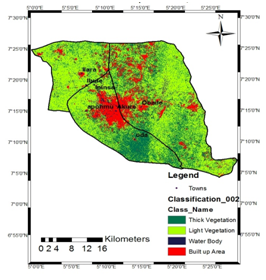
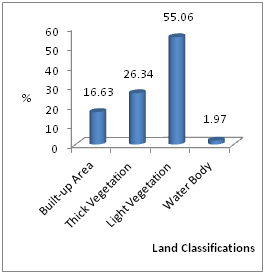
Figure 5a Land cover Classification of Akure as at 2002. b: % Land cover Classification of Akure for year 2002.
Source: Landsat 7 Enhanced Thematic Mapper (ETM+) Satellite Imagery (2002)
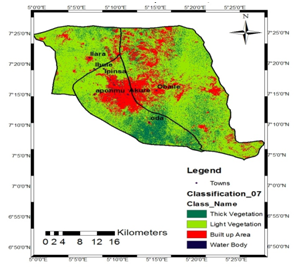
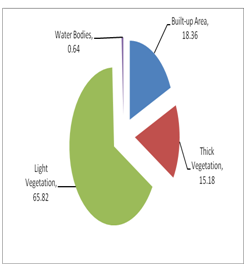
Figure 6a Land cover Classification of Akure as at 2007. b: % Land cover Classification of Akure for year 2007.
Source: Landsat 7 Enhanced Thematic Mapper (ETM+) Satellite Imagery (2007).
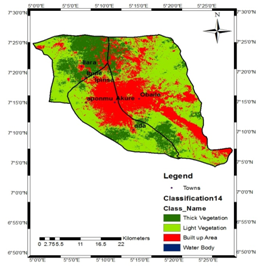
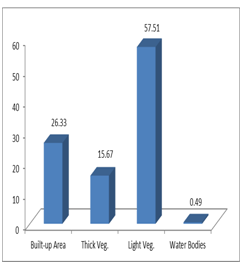
Figure 7a Land cover Classification of Akure as at 2014. b: % Land cover Classification of Akure for year 2014.
Source: Landsat Operational Land Imager (OLI) Satellite Imagery (2014).
The inference deduced from this analysis is the rate of urban expansion as illustrated by the trend of increase in the built-up area and light vegetation (cultivated land areas). The drastic reduction in the percentage area covered by thick vegetation shows there was a phenomenal growth within the studying period. For instance, the built-up area increased by 22.3% between 1985 and 2014 as well as light vegetation (cultivated land areas) by 27.71%. This is likely to be the result of much encroachment into the thick vegetation, rocky and undulating land areas for the purpose of building construction, quarry, blasting and mining activities. Besides, the economic situation in the state around the time (especially, the earlier years of the new millennium) was favorable for individuals, government and various establishments to embark on massive developments.9 For example, in 2002 (being the beginning of the millennium), various projects were embarked upon consequent upon the discovery that the state falls within the mineral endowed region,23 which accounted for the tremendous increase in the built-up areas, which result in massive physical expansion of the region. Again, Akure gained much influx of people seeking greener pastures being the state capital while the discovery of bitumen in the state attracted much investor and other immigrants within the studying period. Its administrative status and concentration of establishments like government ministries, several housing estates, Ondo State Oil Producing Area Development Commission (OSOPADEC) secretariat, Federal University of Technology, Akure (FUTA) and lot more were the centre of consideration for the attraction.
Land cover change (LCC) analysis for the year 1986, 2002, 2007 and 2014
The LCC of Akure and the change detection analysis for the 1986–2002, 2002–2007 and 2007-2014 are presented in Table 1 and Figure 8. From the table and figure, the percentage increase of built-up area, light vegetation (cultivated land areas) and water body was higher between 1986 and 2002 than between 2002 and 2007. Percentage difference for built-up area was much more higher between 2007 and 2014 while other land classifications have negative index. Thick vegetation was rapidly depleted and taken over by light vegetation and built-up land uses as indicated by the negative index throughout the studying period. This is an evidence of consistent growth and rapid development witnessed in the city.
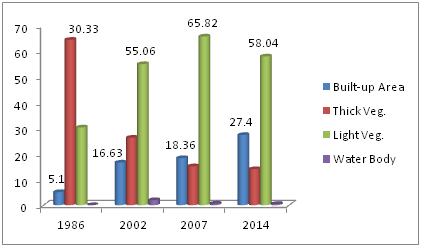
Figure 8a Land Cover Classification and Change Analysis in Akure Region.
Source: Landsat Satellite Imageries (1986, 2002, 2007 and 2014).
The LULC |
2002-1986 |
2007-2002 |
2014-2007 |
|||
Difference in Area (Hecht) |
Difference in Area (%) |
Difference in Area (Hecht) |
Difference in Area (%) |
Difference in Area (Hecht) |
Difference in Area (%) |
|
Built-up Area |
14441 |
11.53 |
2160 |
1.73 |
11318 |
9.04 |
Thick Veg. |
-47818 |
-38.19 |
-13976 |
-11.16 |
-1379 |
-1.11 |
Light Veg. |
30963 |
24.73 |
13475 |
10.76 |
-9740 |
-7.78 |
Water Body |
2413 |
1.93 |
-1658 |
-1.33 |
-199 |
-0.15 |
Table 1 Land cover change (LCC) Analysis for the year 1986, 2002, 2007 and 2014
Source Landsat Satellite Imageries (1986, 2002, 2007 and 2014).
Urban built-up change analysis and predictive model for future expansion
The spatial pattern of sprawling in Akure over a period of three decades (1985-2014), as shown in Figures 4-7, express the direction and extent of growth in the period examined. For instance, between 1985 and 2002, the growth navigates towards the northern and the eastern parts of the region more than any other direction. These areas were earmarked for the construction of Government Residential Areas (GRAs) and most of government parastatals and ministries. Besides, the area was the location of Ijapo estate, a notable residential estate in the city which attracted much influx into the area. The construction of Ilesha-Akure-Owo express route which passes through the north-eastern part of the city was another notable factor that play prominent role of attracting people to the area. But the direction of growth thereafter diffused to other directions, probably due to congestion in this area and availability of cheap lands and good topography that favors construction in other parts of the city. The location of Federal University of Technology, Akure (FUTA) in the north-western part of the city has much influence in attracting huge population of people into the area. Most staff of the institution and students prefer to live close to it, thereby makes the growth to be institutional attraction. Currently, the growth around this institution has almost captured Ipinsa and Ibule (the two nearest settlements) as high percentage of students of the institution find cheaper accommodation there as well as cheaper lands for staff and people from Akure to build houses and hostel accommodation for students. This and other important developments that parade the city revealed significant difference in stages of expansion and land uses within the studying periods. The findings corroborate the work of Oyinloye9 and Balogun6 who observed significant difference in stages of development and growth in Akure since its inception as a state capital. The use of GIS to predict future expansion of the study area and possible changes in land uses was modeled to guide policy makers in the management of land use activities in Akure and environs. Based on 3.6% growth rate adopted in Oyinloye9 for Akure, the predicting future expansion for the built-up area for a period of 20 years (2014 to 2034) is estimated at 68,793.41 hectares. The pictorial representation is shown in Figure 9. As seen in the figure; there is every possibility for Akure to become a full grown conurbation by 2034 when it would have subsumed many of its adjoining communities (Table 2).

Figure 9 Built-up Change Detection Analysis for Akure Urban Land cover (1985–2034).
Source: Author’s Field Survey, 2014.
Year of Growth |
Growth Area (ha.) |
Cumulative Area (ha.) |
Percentage Area |
1986 |
6383.65 |
6383.65 |
5.1 |
2002 |
20825.33 |
27208.98 |
16.63 |
2007 |
22984.57 |
50193.55 |
18.36 |
2014 |
32969.15 |
83162.7 |
26.33 |
2034 Projected |
66881.02 |
150043.7 |
53.41 |
Table 2 Built-up change detection analysis for akure urban land cover (1985–2034)
The study gives a clear indication of unguided expansion in the growth of Akure which seriously affects the pattern of land uses in the city and its surrounding settlements. There were incompatible conversions of land uses and undue encroachment into green areas in the adjoining settlements due to favorable economic situation in the state around the period. In the early year of the millennium, Akure gained much influx of people being the state capital; and most importantly, due to the discovery of bitumen in the state which attracted much investor and other immigrants in quest of greener pastures and job opportunities. Its administrative status and concentration of establishments were the key indices for this attraction. With this, the thick vegetation was massively encroached which consequently gave way to further developments and expansion from the city into various surrounding communities. Also, the regional setting of Akure has naturally influenced the direction of the expansion. Findings revealed that the city spread out along the fairly flat areas of the north-western part of the city which appear to be more favorable to human settlements. Thus, the expansion first tends towards this direction before it began to diffuse to other areas. Based on major findings in this study, it has become pertinent to put up some policy recommendations. In the first instance, the unguided nature of Akure urban development whose effects on land use pattern are well prominent in the study area needs adequate attention. The check on this should commence with land acquisition and allocation procedures for various uses so as to guide against incompatible land uses. It is therefore recommended that ministries in-charge of land management should employ resourceful control measures over private and public land uses through effective zoning strategy. In view of this, the Development Control Department (DCD) in the Ministry of Urban Development and Physical Planning should be reinforced with strong tools to carry out their duties, particularly in the area of effective monitoring for sustainable development.
The existing land use in the study area is more of residential, most of which are aged and dilapidated. In some parts of the city, especially at the urban core; most of the old buildings are being removed and changed over to new ones. In the course of changing some of these buildings, the usages are always at variance with compatibility standard. They constitute nuisance rather than complementing the planning and environmental standards. In this regard, it is recommended that adequate monitoring be made by DCD and other stakeholders in urban planning, right from plan approval stage to erection of structures so as to forestall such occurrences with a view to achieve a sustainable and virile livable environment. Besides, property rehabilitation strategy should be adopted on degraded landed properties rather than arbitrary removal and rambling replacements. This should involve improving the existing infrastructural facilities as well as providing new ones with a view to making their services functional and accessible to all and sundry. To reduce the level of encroachment into natural vegetation in the course of expansion, it is also suggested that vertical expansion should be encouraged in the form of story buildings, high scrappers, and the likes. It is believed that this will reduce the rate of land consumption and improve the structural quality as well as adding to the aesthetic value of the environment. The administration of physical planning in Nigeria was not effective as far as promotion of orderly development of urban and rural communities is concern prior the enactment of Decree 88 of 1992 Nigerian Urban and Regional Planning Law (NURPL). Related programs on physical planning were carried out only on ad-hoc basis. However, the enactment of 1992 NURPL makes provision for improvement of urban area and city sustainability; essentially in part IV section 79-85 of the law. With this, it is expected that cities are to be in orderly shape and made sustainable for human living. But, in reality, this is not so. At local government level, planning is expected to be felt through various planning authorities since it is the closest tier of government to the people. But the authorities are almost become moribund since the mode of planning administration in Nigeria does not allow them to function. It is therefore recommended that the state of local government planning administration in Nigeria be reactivated and made functional. The existing Master plan of Akure was produced in 1980 and has become inactive, old and superseded. There is need for a more comprehensive one as well as Regional Plan to guide the development and spatial growth of the region. These plans are to be administered by a constituted board which is to be saddled with responsibility to maintain an orderly and aesthetic environment in the region. The board is to be made responsible for the preparation and implementation of planning schemes as well as local, area and structural plans in conformity with the state and regional plans. This will go a long way to assist in regulating land uses for sustainable development in the area.
None.
None.
None.

©2018 Owoeye, et al. This is an open access article distributed under the terms of the, which permits unrestricted use, distribution, and build upon your work non-commercially.